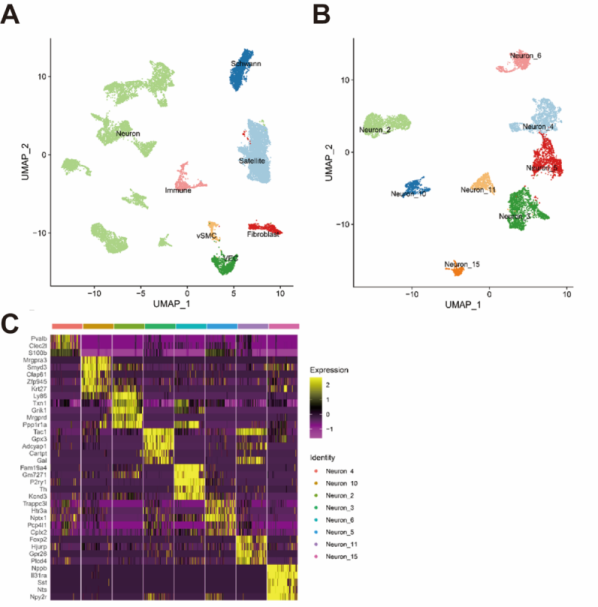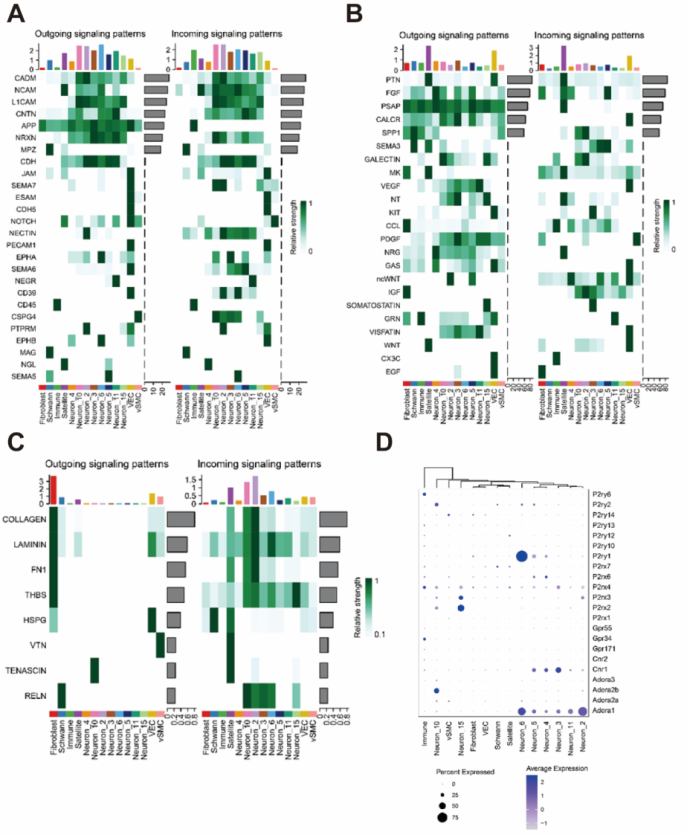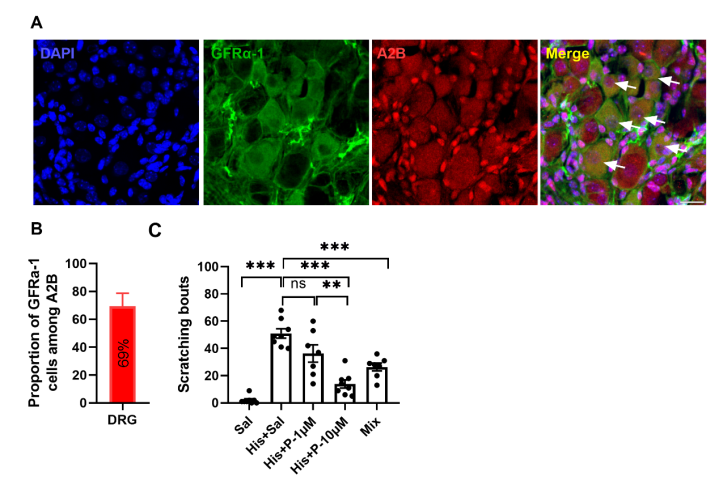中国神经再生研究(英文版) ›› 2024, Vol. 19 ›› Issue (6): 1367-1374.doi: 10.4103/1673-5374.384067
背根神经节细胞间通讯模式的预测:单细胞RNA测序数据分析
Prediction of cell-cell communication patterns of dorsal root ganglion cells: single-cell RNA sequencing data analysis
Yanna Lian1, 2, Cheng Wu1, 3, 4, Li Liu5, Xiangyao Li1, 2, 3, 4, *
- 1National Health Commission and Chinese Academy of Medical Sciences Key Laboratory of Medical Neurobiology, Ministry of Education Frontier Science Center for Brain Research and Brain-Machine Integration, School of Brain Science and Brain Medicine, Zhejiang University, Hangzhou, Zhejiang Province, China; 2International Institutes of Medicine, the Fourth Affiliated Hospital of Zhejiang University School of Medicine, Yiwu, Zhejiang Province, China; 3Zhejiang University-University of Edinburgh Institute, Zhejiang University School of Medicine, Zhejiang University, Haining, Zhejiang Province, China; 4Biomedical Sciences, College of Medicine and Veterinary Medicine, The University of Edinburgh, Edinburgh, UK; 5Core Facilities of the School of Medicine, Zhejiang University, Hangzhou, Zhejiang Province, China
摘要:
背根神经节神经元的兴奋性影响痛觉,刺激背根神经节是控制痛觉的一种新方法。了解背根神经节细胞的细胞间通讯有助于开发一种新的疼痛或痒管理策略。然而,背根神经节的细胞间通讯模式尚未见研究。实验利用单细胞RNA测序数据库研究背根神经节细胞中可能存在的细胞间通讯。从已发表的3项研究6个样本中收集了单细胞RNA测序数据,共得到17766个细胞。在整合样本后根据细胞之间的高变基因对细胞进行聚类,根据传统细胞类型的标记物注释了卫星胶质细胞、许旺细胞、神经元、血管内皮细胞、免疫细胞、成纤维细胞和血管平滑肌细胞。基于基因表达特征,背根神经节神经元可被分为8种亚型,分别介导本体感觉、痒觉、触觉、机械、热和冷感觉等。利用CellChat R包预测背根神经节细胞间的通讯模式,发现背根神经节细胞可能通过细胞间接触,细胞间分泌信号通路和细胞外基质等进行信息传递。通过研究神经递质合成、转运、释放、以及受体等相关蛋白的编码基因的表达特征,发现背根神经节细胞之间还可通过神经递质-受体方式进行信息交流。有趣的是,一群可能介导痒觉(Mrgpra3阳性)的神经元特异地表达GFRα-1和Adora2b-编码腺苷A2B受体。免疫组化实验显示,约69%的A2B阳性神经元表达胶质细胞源性神经营养因子家族受体α1。最后,药理学和行为学实验显示,A2B受体拮抗剂PSB-603以剂量依赖式方式抑制组胺诱导的瘙痒行为。基于单细胞RNA测序数据分析,该研究预测了背根神经节细胞间信号传递的可能途径和细胞间通讯的不同模式,还发现DGR中的A2B受体参与痒觉调节。
https://orcid.org/0000-0002-4793-0550 (Xiangyao Li)



